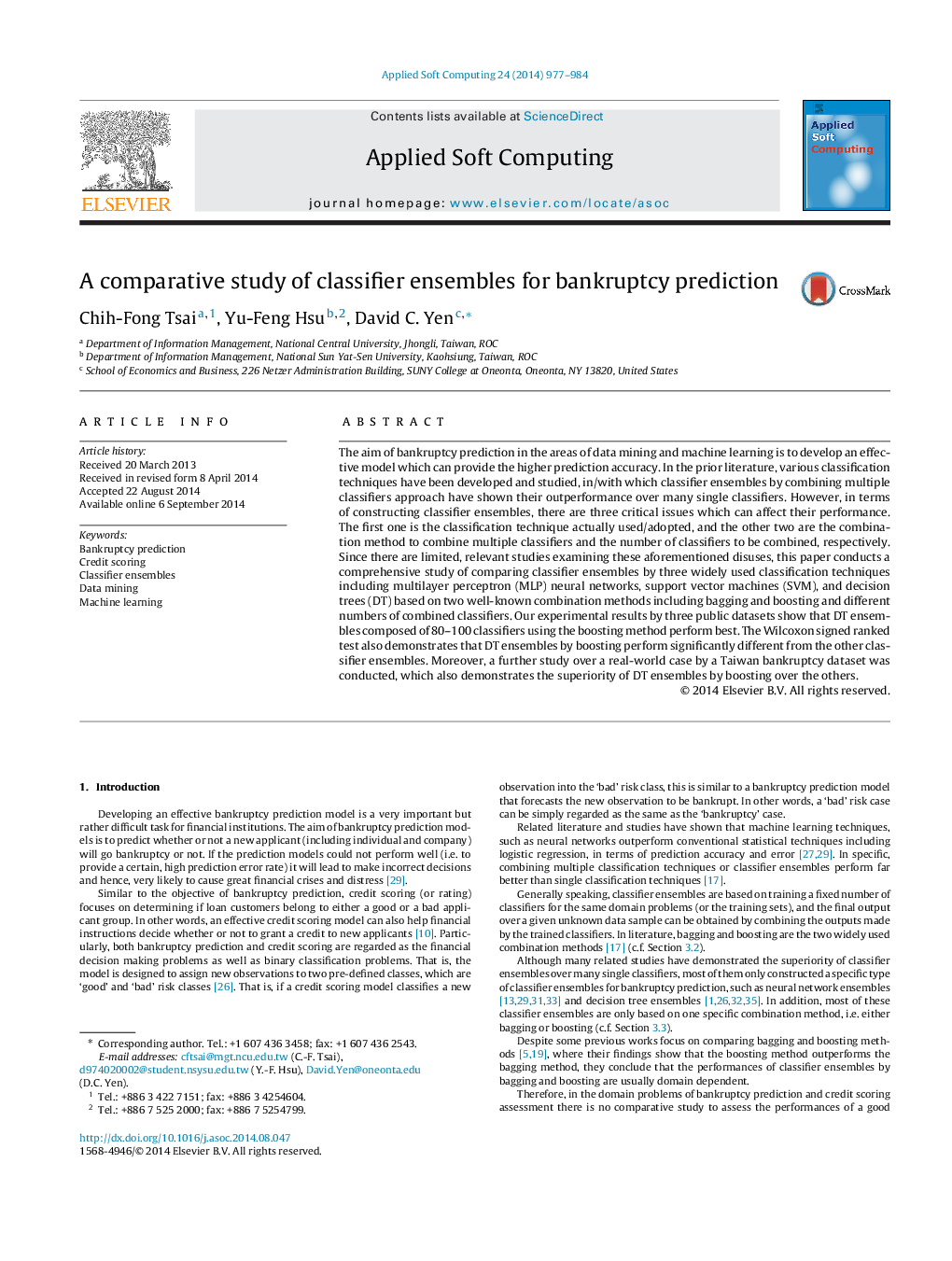| کد مقاله | کد نشریه | سال انتشار | مقاله انگلیسی | نسخه تمام متن |
|---|---|---|---|---|
| 6905835 | 862824 | 2014 | 8 صفحه PDF | دانلود رایگان |
عنوان انگلیسی مقاله ISI
A comparative study of classifier ensembles for bankruptcy prediction
ترجمه فارسی عنوان
یک مطالعه تطبیقی گروه های سازنده برای پیش بینی ورشکستگی
دانلود مقاله + سفارش ترجمه
دانلود مقاله ISI انگلیسی
رایگان برای ایرانیان
کلمات کلیدی
پیش بینی ورشکستگی، نمره اعتباری، گروه سازنده داده کاوی، فراگیری ماشین،
موضوعات مرتبط
مهندسی و علوم پایه
مهندسی کامپیوتر
نرم افزارهای علوم کامپیوتر
چکیده انگلیسی
The aim of bankruptcy prediction in the areas of data mining and machine learning is to develop an effective model which can provide the higher prediction accuracy. In the prior literature, various classification techniques have been developed and studied, in/with which classifier ensembles by combining multiple classifiers approach have shown their outperformance over many single classifiers. However, in terms of constructing classifier ensembles, there are three critical issues which can affect their performance. The first one is the classification technique actually used/adopted, and the other two are the combination method to combine multiple classifiers and the number of classifiers to be combined, respectively. Since there are limited, relevant studies examining these aforementioned disuses, this paper conducts a comprehensive study of comparing classifier ensembles by three widely used classification techniques including multilayer perceptron (MLP) neural networks, support vector machines (SVM), and decision trees (DT) based on two well-known combination methods including bagging and boosting and different numbers of combined classifiers. Our experimental results by three public datasets show that DT ensembles composed of 80-100 classifiers using the boosting method perform best. The Wilcoxon signed ranked test also demonstrates that DT ensembles by boosting perform significantly different from the other classifier ensembles. Moreover, a further study over a real-world case by a Taiwan bankruptcy dataset was conducted, which also demonstrates the superiority of DT ensembles by boosting over the others.
ناشر
Database: Elsevier - ScienceDirect (ساینس دایرکت)
Journal: Applied Soft Computing - Volume 24, November 2014, Pages 977-984
Journal: Applied Soft Computing - Volume 24, November 2014, Pages 977-984
نویسندگان
Chih-Fong Tsai, Yu-Feng Hsu, David C. Yen,
